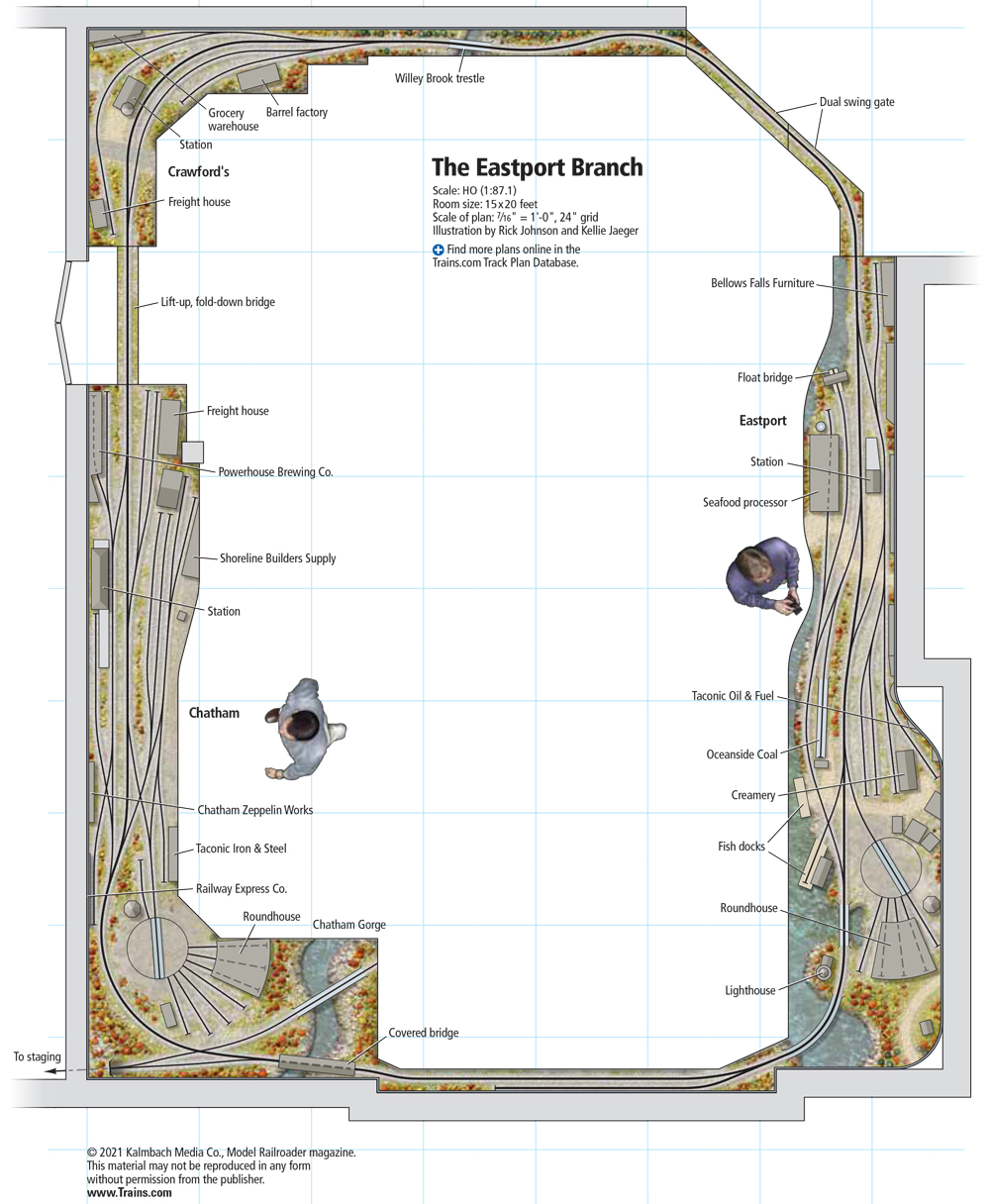I was pleased to see two small layouts described in the October issue of MRR. The large layouts often described in detail are entertaining but nowhere near as useful as articles about small layouts. Many of us do not have and will never have space or time to build even a moderate sized layout. 12x12 seems common enough. 12x20 is pretty big.
The first section of my layout was a 5x12 foot table layout on wheels. Is that small or medium? Anyway, it took five years to build, including structures, scenery and rolling stock, both upgrades of older equipment and new kits.
I learned a virtue of DCC with this layout. If I had built it in DC, I would have had trouble creating independent blocks, and basically would have spent all my time running the track. With DCC, the issue of blocks isn’t there so I could just run the trains.
I realize now that I should have isolated parts of the layout better. While I didn’t have an issue with controlling trains, I later found it advantageous to add circuit breakers and power districts, and that’s something I should have done from the start.
I also think that “smallish” layouts are underestimated. Especially if you like the building part of the hobby and if you don’t have tons of spare time. You can actually finish the layout without getting bogged down. And small layouts are perfect for slow, detailed, small-sized engines, either switching for modern era, or smaller pre-50s steam. My layout is a shelf layout in 11X7 room. Just perfect for me. And cheaper too.
At our club, we definitely have members that prefer to do operations and have zero interest in detailing and getting their hands dirty in paint. For these folks, I could imagine a simple shelf layout, with one mainline, with some spurs, with two return loops at each end. Picture background. I think I could build that in a month…
Simon
the Going Out East article in the current (Nov 2021) issue of MR describes a layout composed of one smaller and two larger modules that are connected with narrow “ribbons” that allows greater portability.
i’ve been considering this approach. modules that don’t abut with one another but are connected with a ribbon of track. this makes the modules more independent of one another and allows more flexibility in arranging
i think this approach also allows modules to be replaced, added or shifted around as space changes. you could start work on a new module while keeping everthing in place and then when sufficiently complete, incorporate it into the layout. perhaps a new module is a branch, just requiring a turnout on one of the ribbons or an existing module with more that two tracks at its borders
Gregc–
I really like that concept. Sometimes less really is more, and it’s nice to see a layout that can be finished in stages and doesn’t require an army to build and maintain.
John
As someone with limited modeling time and a specific prototype in mind, this is my MO. On a 1’ x 8’ shelf, I’ve been able to ‘finish’ my layout to a certain level of detail, and I can go further in to enhance those details in the future. If/when I have a more permanent residence and dedicated space, I do not think my layout preference will change significantly-- a slightly wider shelf for the scenery depth, and longer to accommodate one or two more switching opportunities with more realistic spacing.
Phil
Well-before I started building my layout, I visited two open houses. The 1st was a huge basement empire. It was dizzying keeping track of the trains and it had zero scenery. In contrast, the 2nd layout looked far more “professional.”
Bottom line: do what works for you and don’t make it like you’re compensating.
